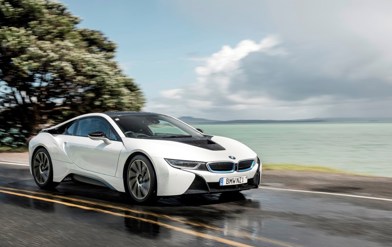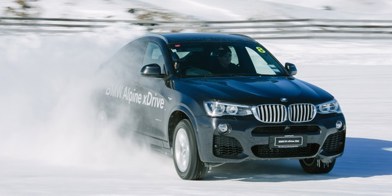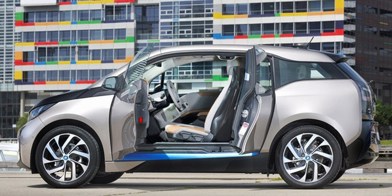When a sports utility wagon has enough off-roading talent to achieve beyond the point where few owners might dare go, there’s no excuse not to muck in.
For the second part of its media introduction day, the latest Ford Everest was up to its belly in sludge. Just a reminder that old school has its benefits.
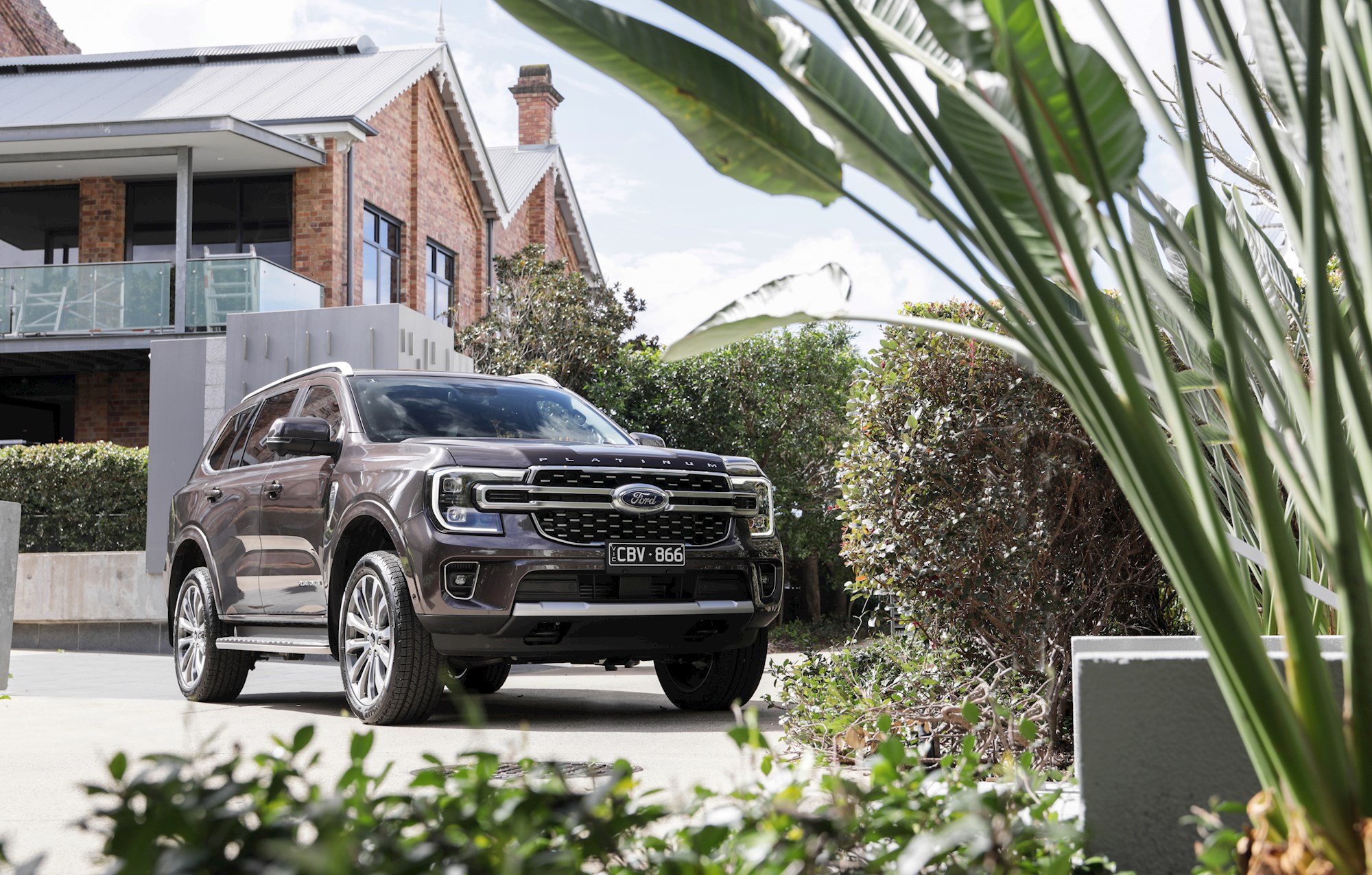
About that. This seven-seater maintaining body-on-frame build puts in it a minority category; unibody is the modern way. Yet by taking the latest platform, powertrains, technology and safety credentials from the Kiwi-favourite Ranger ute, it’s more advanced than most of its ilk. A new kind of old, then.
Previous Everest already did well for off-road assist tech. This one goes further, particularly in V6 format. The traction-control system has a specific muck mode and the terrain response uplifts to more specific adventure driving managements that manage diff locking, low range and the like.
The bash through scrub at a private venue outside of Brisbane delivered some of the slimiest, boggiest conditions you can imagine. Success on road tyres wasn’t a sure thing. Pre-arrival rain had made muddy bits muddier.
‘Mud/ruts’ mode was perfect. Schlepping through a stream and stretches of black ooze, crashing through off-camber ruts and attacking a steep clay pinch, upwards and down, was a cinch. Promisingly too, the flagship Platinum, on 21-inch wheels and tyres that look outrageous for off-roading was as much a Hillary hero as the sensibly shod variants.
What of the on-road experience? The Australian-developed T6 platform which has underpinned their four-wheel drives since 2011 represents good bones, yet old Everest tended to be a bit heavy-footed.
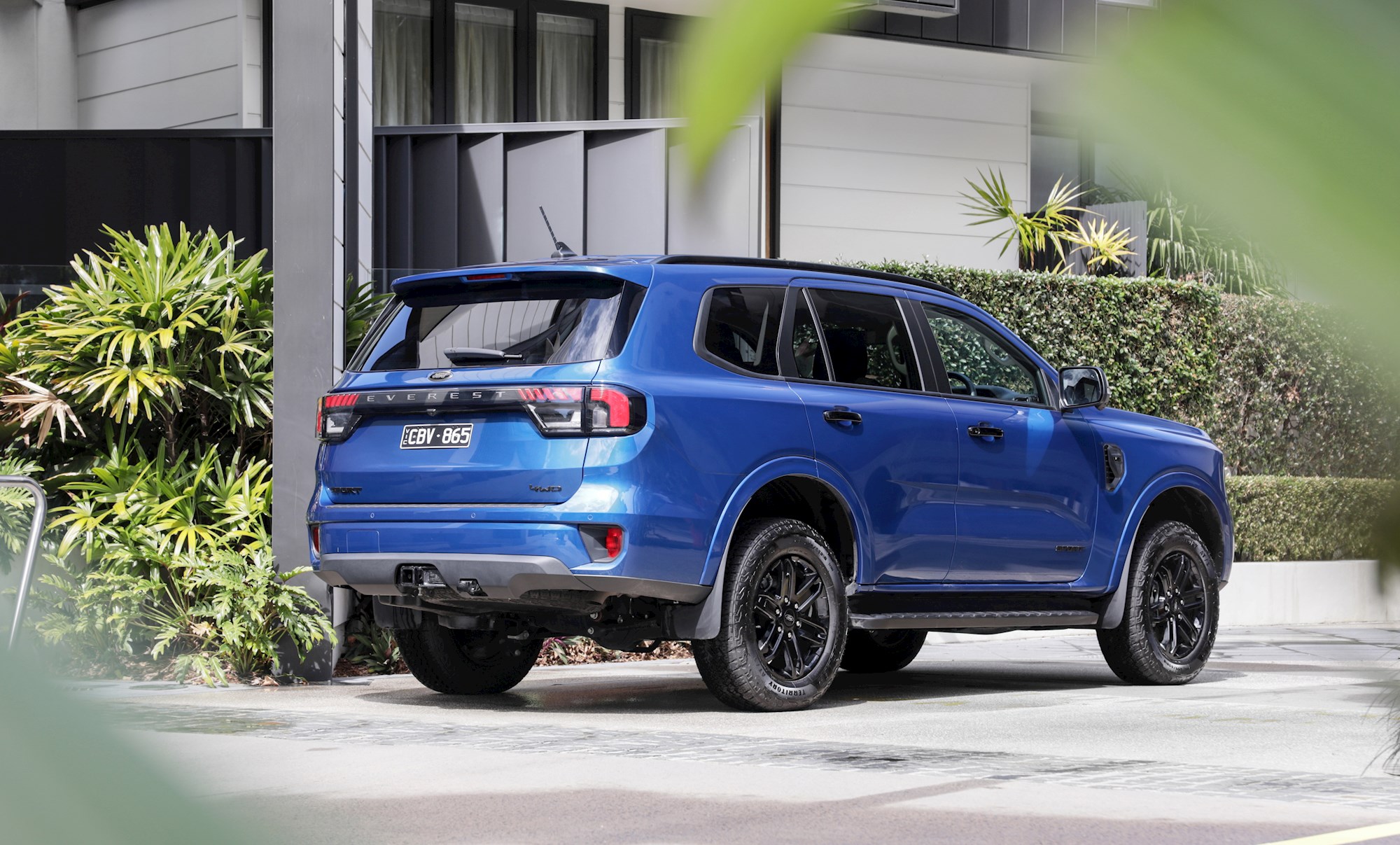
A programme that had us initially dodging traffic congestion by threading through narrow suburban streets, before breaking out into the countryside and a mix of sinuous hill country roads plus some motorway left impression the new is a more balanced package.
Agreed, the market’s top-selling ute is still the model you think of when figuring dynamic behaviours. As before, the mass can be felt when asking it to turn into tighter corners, and on some of the narrower and twistier roads I drove on, it did start to over-sized.
Yet there’s impression it places more squarely and is less ponderous and roly-poly than others of similar construct. Also helpful is that the driver can position more comfortably, now the steering wheel finally has height and reach adjustment.
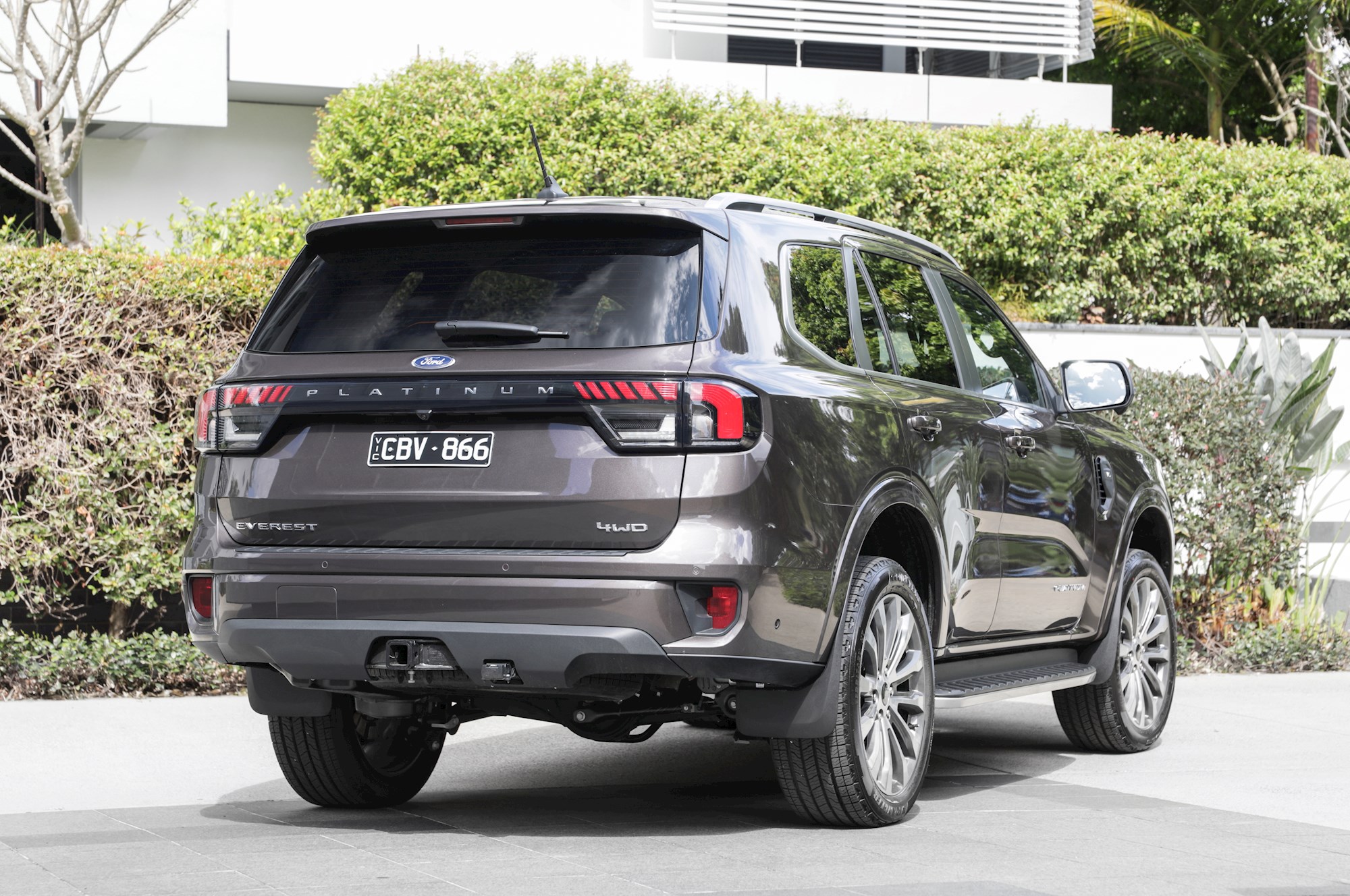
While the base ingredients of a live rear axle with a Watt's linkage, ladder chassis and independent front suspension remain, as with Ranger, the wheel track and wheelbase increase, with the front differential moving forward. Small changes, likely at big cost, delivering positive effect.
Overall it’s more involved, but mainly calm with it. The steering is sharp and communicative, the brakes trustworthy and the ride quality really quite good, including with the Sport edition, which is tangibly firmer.
It’s great the range continues with the familiar 2.0-litre sequentially turbocharged diesel that ended up as the sole choice in the old line after the 3.2-litre five-cylinder was retired.
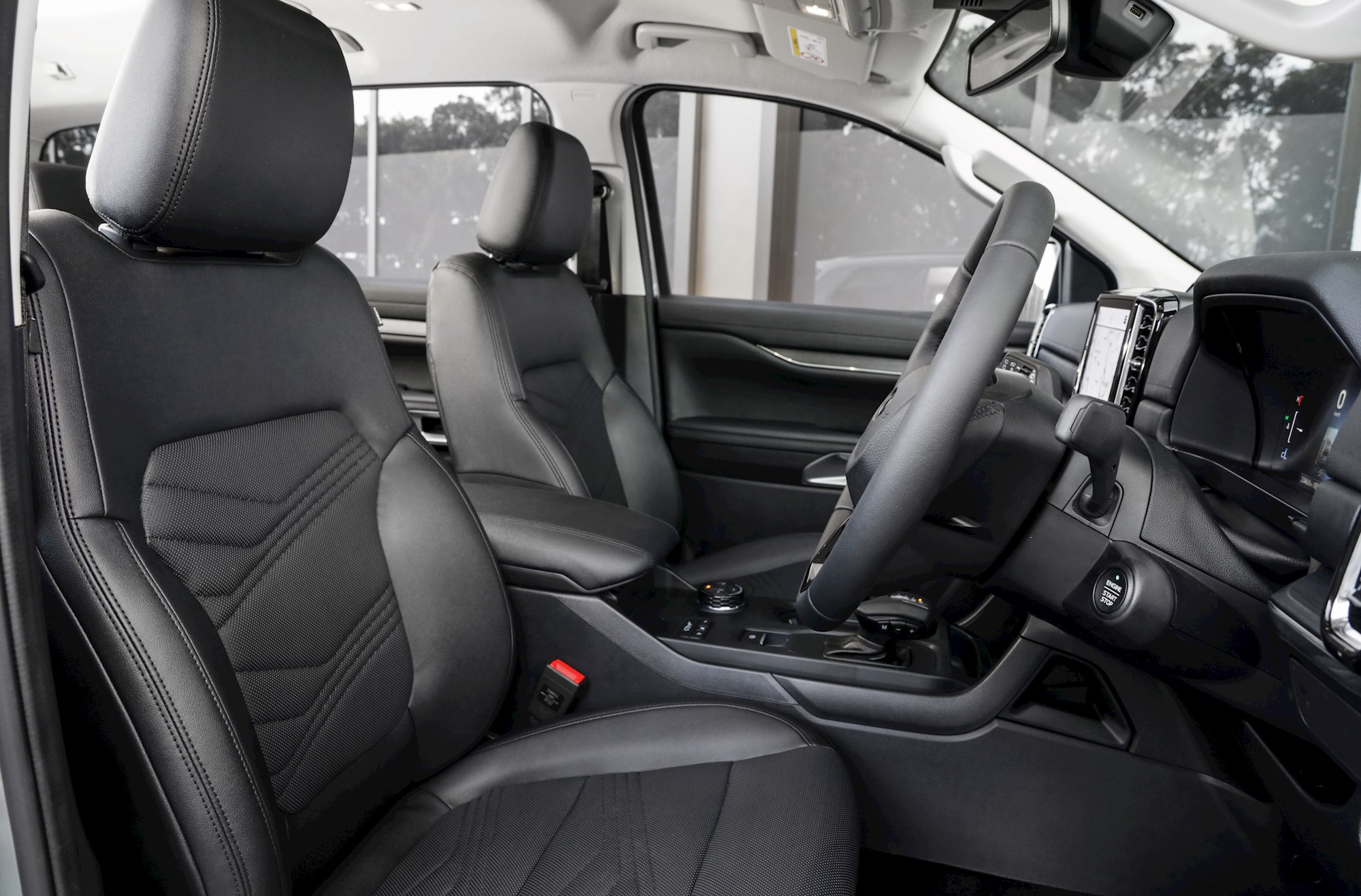
With outputs tweaked to 154kW at 3750rpm and 500Nm at 1750–2000rpm, the four=cylinder remains a big-hearted friend. Provision in the base $71,990 Trend is good buying, given that model now costs a little less than its predecessor.
Yet the rush is on for the V6, and though it’s the reason why the $79,490 Sport and $84,990 tree-topper, previously called Titanium and now designated Platinum, hold a $4500 premium over past equivalents, it’ll be an easy sell anyway. Having a V6 badge is conceivably great for boat ramp and school run kudos, yes, but beyond that it is genuinely a better powerplant for this size of vehicle.
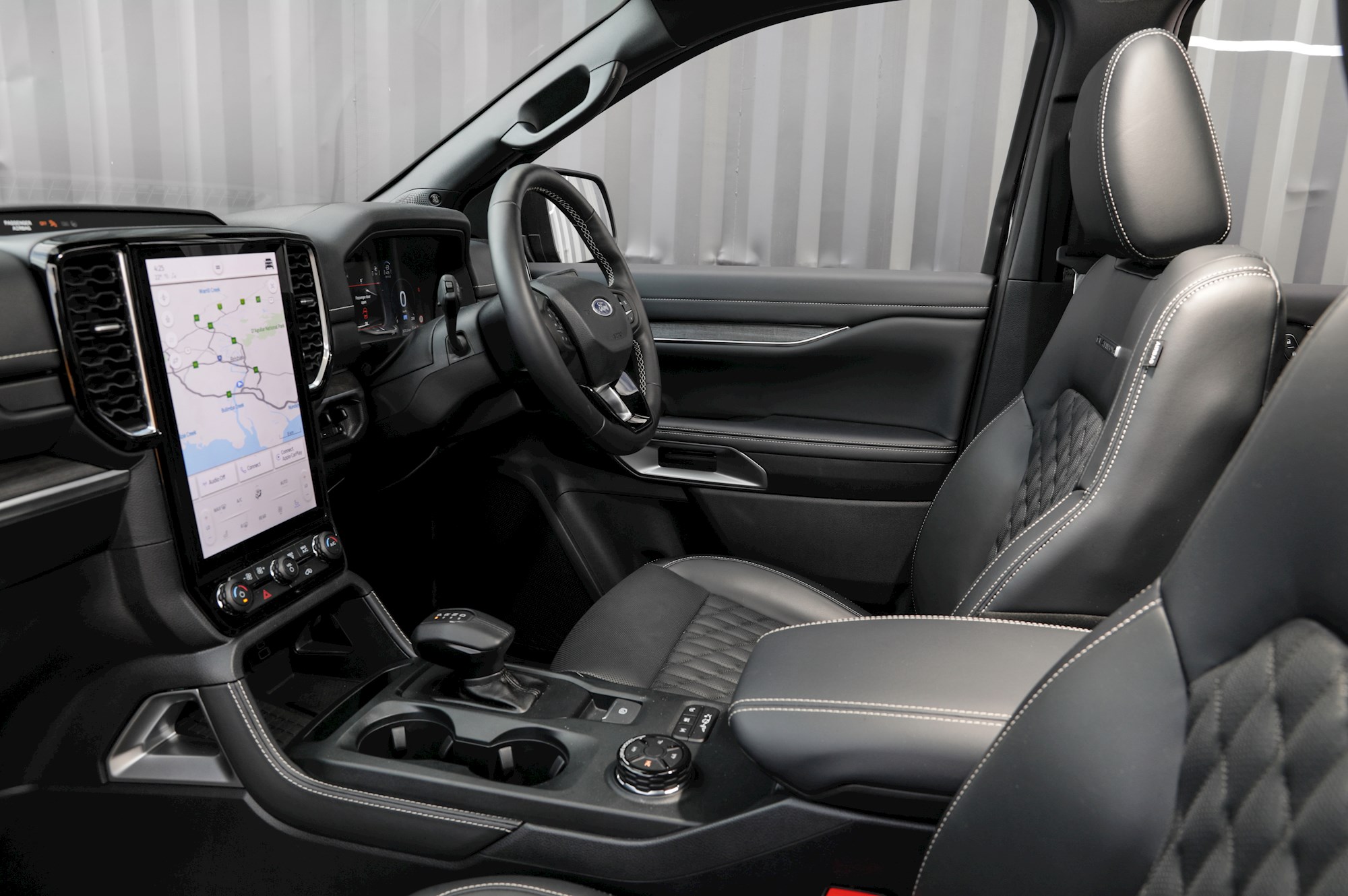
More power and torque -184kW at 3250rpm and 600Nm at 1750–2250rpm – are basic attractions. But being smoother, quieter and in an even more solid relationship with the sole choice 10-speed automatic also helps. You pay a higher CO2 tax, but fuel consumption is only marginally greater.
And so muscular. You know a diesel is special when it’ll idle through ankle-breaker ruts without any throttle application. Out on the open road, it’s barely showing 1000rpm when running at 100kmh.
The brawn should serve it well for towing, for which the optimal braked rating has climbed 400kg to 3500kg (with Ford’s towing pack). That means it has level pegging with the Isuzu MU-X and Mazda BT-50, and is ahead of the Mitsubishi Pajero Sport and Toyota’s Fortuner and Land Cruiser Prado. Even without anything hooked behind, you don’t feel it’s going to waste, due to the exceptional refinement. So smooth, so quiet, such impressive response.
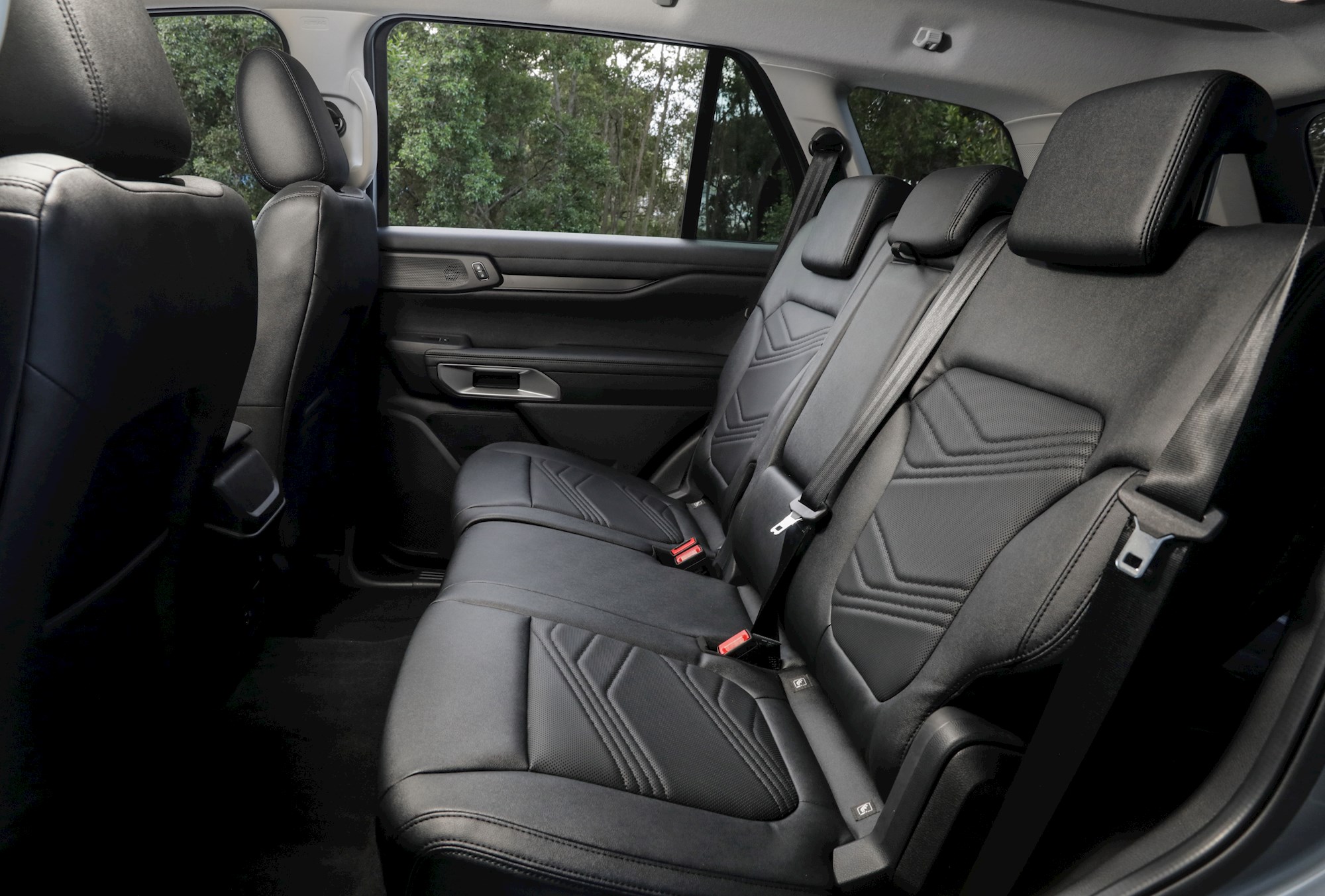
As a family unit? The construct means the whole vehicle sits high, and though cabin space is generous, the floor is more elevated than in a car-derived SUV, which influences seating positions and headroom. Both are decent, but it’s not as airy as a unibody model.
The occupant count on launch never exceeded three adults and travelling in company with some overseas’ media with far more luggage than seemed necessary for four days away meant all boots were full of bags, with no time to unpack and check the rear most seats that fold away when not in use. Ford says it has improved third row access but, as before, that back row is a kid zone.
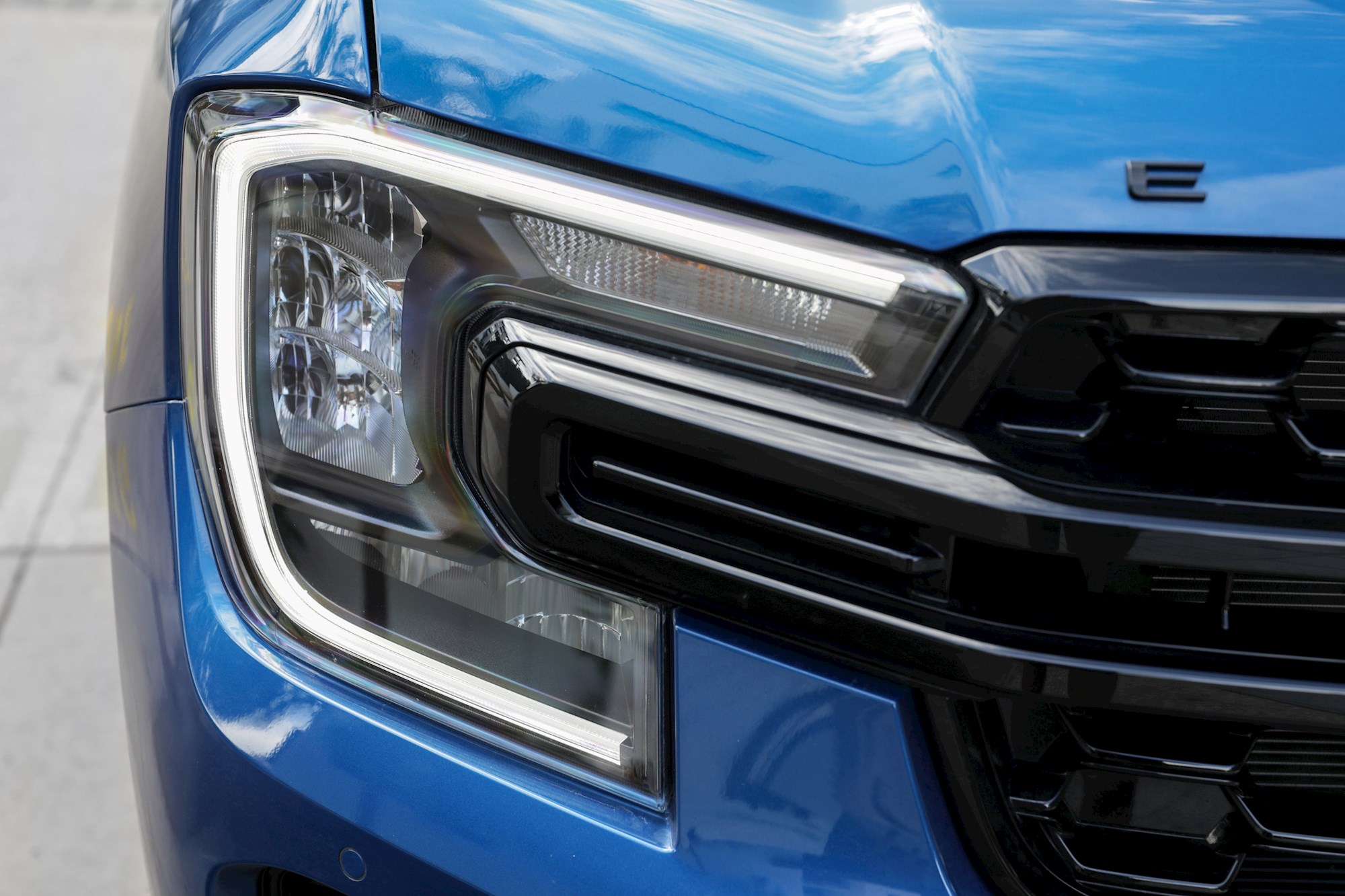
The powerplant’s polish might well have induced the design team to smarten up this steed’s styling.
Obviously, insofar as the external side of things goes, it’s only like a Ranger around the front, but inside there’s more similarity, in that the dashboard, instrument cluster, centre console and gear selector are identical.
Everest in even finest format is quasi-luxury, though in fairness it’s aimed more at real families than royalty. All the same, it’s easy to understand why Ford locally decided not to follow Australia’s lead and picked up the Ambiente, which sites below Trend across the Tasman. As tasty as having a version in the $60k zone would have been, the neighbour’s entry choice would risk being too utilitarian for market tastes here.
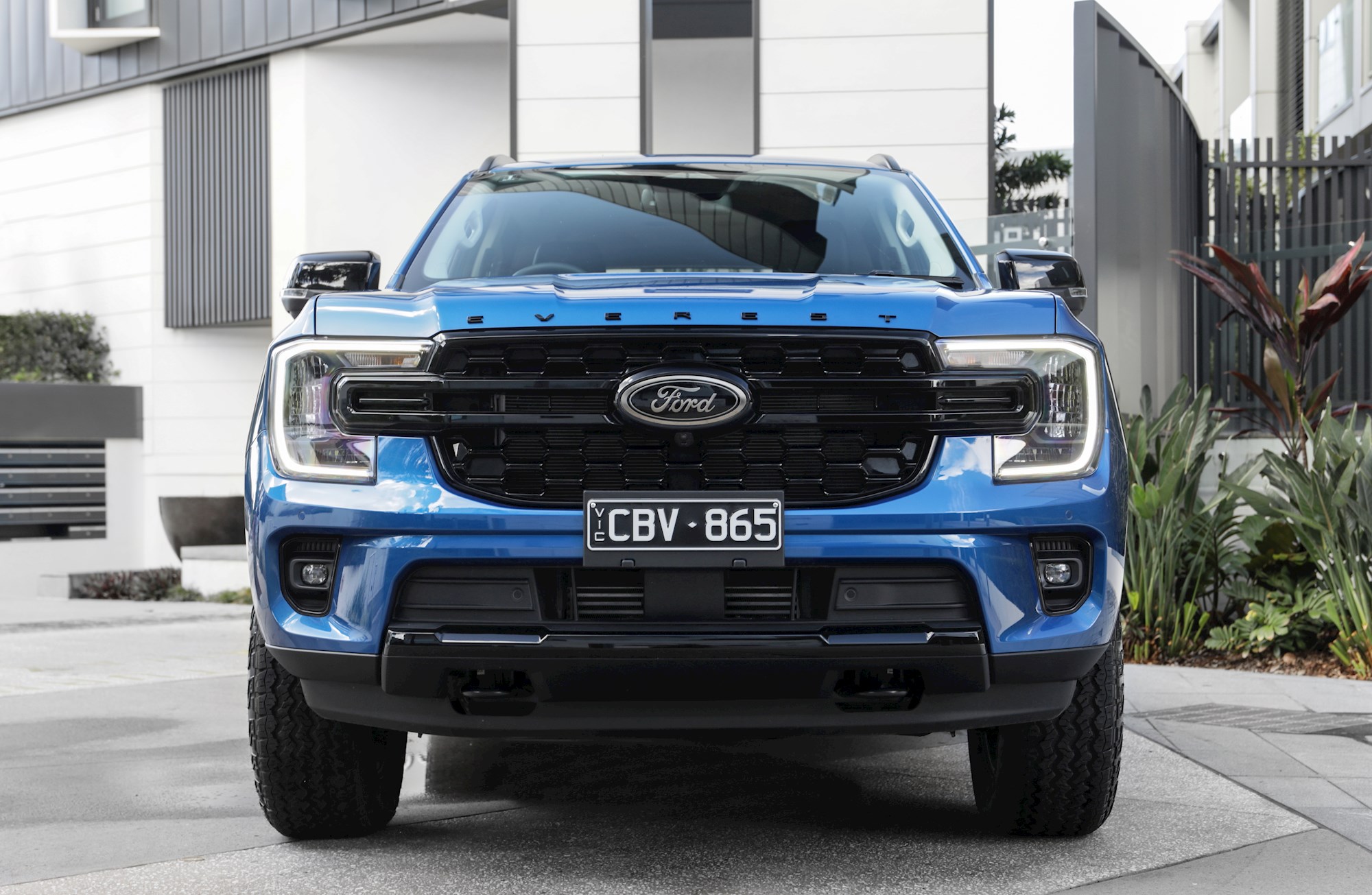
The hard (albeit hard-wearing) plastics and quality of the carpets suggests Ford is taking precaution for muddy gumboots, though attempt with the V6s to incorporate a higher quality of soft touch trim across the dash and door tops is appreciated, plus of course it has the big infotainment screen and fully LCD dash to wow.
Depending on the model grade, the portrait infotainment displays are either 10.1 or 12 inches in diameter, but either way the quality of the displays is high. It’s not the only contender with a touchscreen, but in appearance alone, Ford’s is the standard-setter, while operability is decent, too, with the native systems generally working as adeptly as CarPlay (which hooks in wirelessly), though the navigation’s voice control hasn’t the widest word recognition. It was resistant to locating the lunch stop until I said ‘winery’ instead of ‘vineyard.’
All Everests come with an 8.0-inch digital instrument cluster, plus a 12-inch infotainment screen. Leather seats, wireless phone charging with wireless Apple CarPlay/Android Auto mirroring and dual-zone climate control also feature.
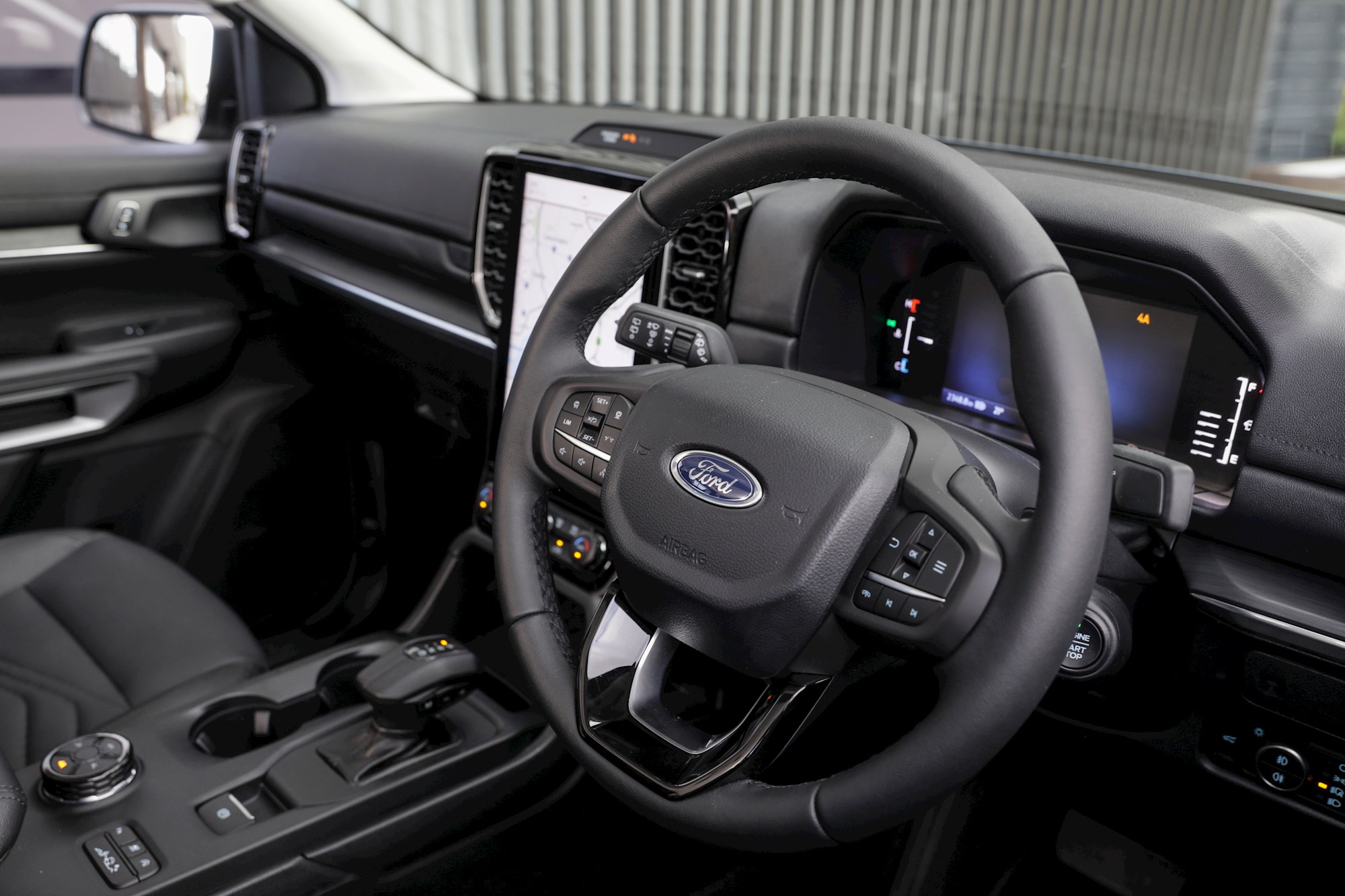
All models also come with a full suite of advanced safety tech, including nine airbags (including a centre airbag between the front seats) and crash avoidance systems such as blind zone warning and rear cross-traffic alert.
The Sport seems the best pick of all. It adds heated and ventilated power-adjustable seats for the driver and the passenger. Heated seats avail for second row occupants in the Platinum. It also achieves a larger (12-inch) instrument display and a premium 12-speaker Bang and Olufsen audio system.
FordPass enables remote start, vehicle status check and remote lock and unlock functions via a mobile device. It also allows external control for an exterior zone lighting system which lights up the ground around the vehicle, for safer approaches at night, or for camping, presumably in normally hard-to-reach places.
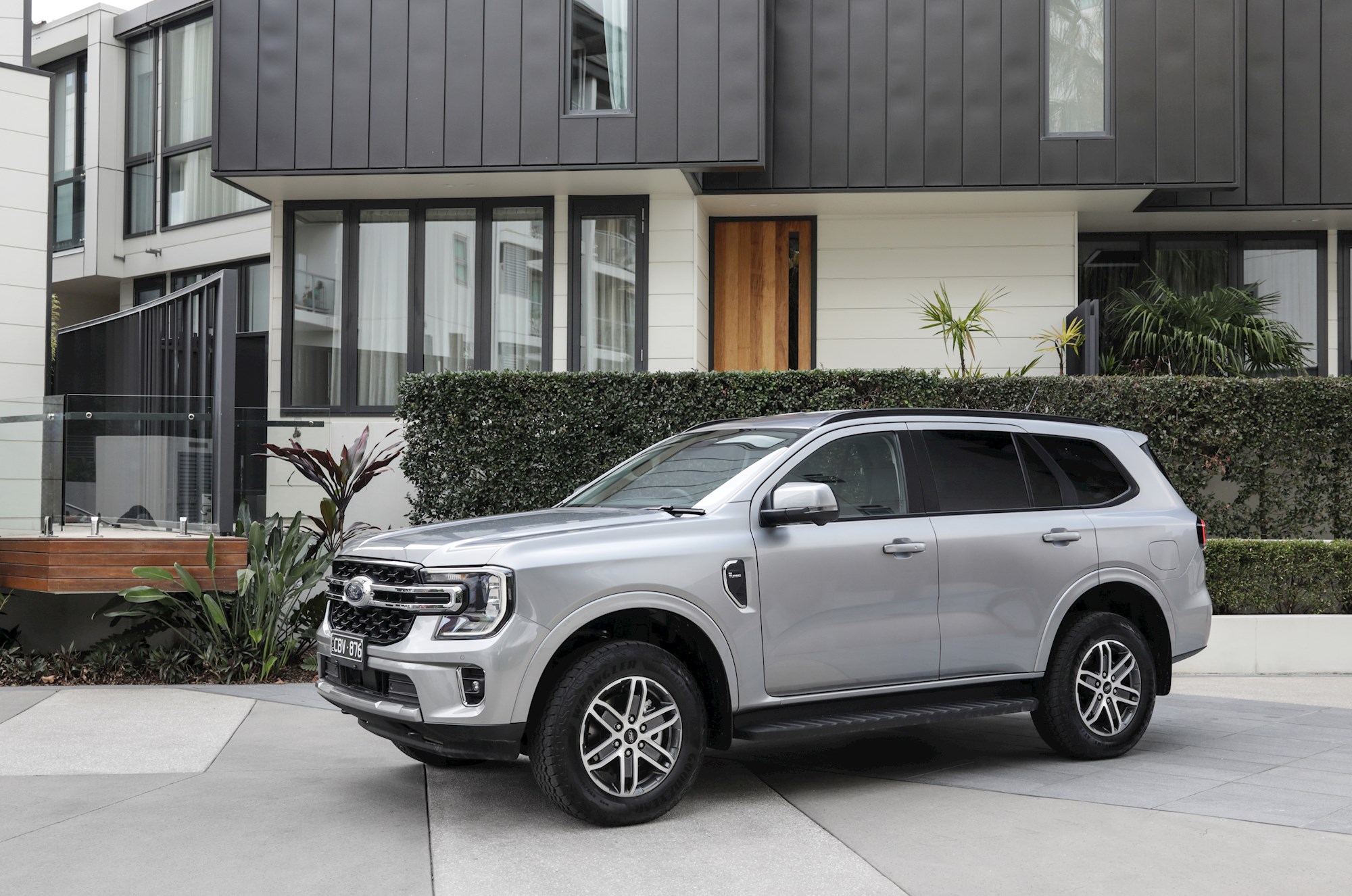
Even though it has fancier tech, what’s worth bearing in mind about Everest is that it’s not really tailored for urban explorers and city life. It’s expected to go where the wild things are.
BREAK IT OUT
Ford Everest
Price: $71,990 (Trend), $79,490 (Sport), $84,990 (Platinum)
Torque: 600Nm
Power: 184kW


































